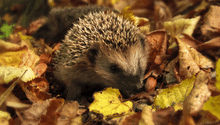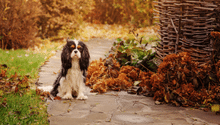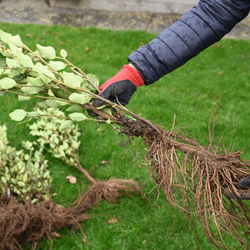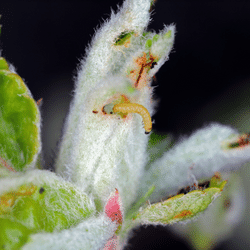
November Gardening Jobs
iWhat to Do in the Garden in November: How to Prepare for Winter
The leaves are falling, the clocks are going back. This can only mean one thing – November! As winter edges ever nearer, you may be forgiven for thinking your garden will be making fewer demands on your time... hard luck we’re afraid! In fact, this is one of the busiest moments in the gardening calendar, as you tidy, prune, move, and inspect existing plants, as well as plant and propagate a whole lot of new plants.
Time and effort spent now can make a big difference to your garden next year. Just remember to make time for a toffee apple or three!
Contents
- Trees, hedges, and shrubs
- Flowers
- Garden maintenance
- Pests and diseases
Trees, hedges and shrubs
- Protect fruit trees from winter moth damage
Chomped leaves on your apple, plum, cherry, or pear? Disappointing crop of fruit? You may have winter moth caterpillars…
It is about this time of year that the wingless females of these invertebrates start to emerge from the soil, crawling up tree trunks to lay their eggs. In spring these hatch into caterpillars, which then munch their way through leaves, blossom, and fruit buds.
As with all garden ‘pests’, tolerance is best in terms of supporting a natural ecosystem. However, if you feel the need to intervene, grease bands and sticky barriers applied to the trunk can be an effective way of interrupting the cycle. These will need to be installed at the start of November, about 45cm above soil level. Be aware that these traps will also kill other beneficial insects, so only use if necessary, and remember to remove when the females cease to be active in April.
- Plant any bare-root shrubs or hedges
Bare root season is upon us! For the uninitiated, these are plants which are grown in the open ground, dug up during the dormant season, and despatched in a lightweight, ‘naked’ state. This method offers a cheaper alternative to pot-grown plants and tends to be quicker to establish.
The economy of bare root is especially evident when it comes to hedges, which generally involve buying plants in larger quantities. See our bare-root hedging range here, and read our How to Plant a Bare-Root Hedge blog for tips on successful establishment. Bare roots can sell out quickly, so get your order in as soon as possible to avoid disappointment.
- Plant bare-root roses, but watch out for replant disease
Roses are another plant commonly available as bare root. Treat these as above, though with extra consideration given to planting location. Roses sometimes struggle to establish if they are planted where there has been a rose before, thought to be to do with a build-up of soil-based pathogens.
Clearly the best approach is to avoid reusing a former rose spot. Where this isn’t possible, try lining the planting hole with a cardboard box and backfilling with soil from elsewhere in the garden. The idea is that once the cardboard rots away, the plant will be established enough to cope with any soil-dwelling foes that may be lying in wait.
- Prune hedges, shrubs, and trees
When it comes to hedges, you will have ideally finished your trimming by late summer, so that the resulting new growth has a chance to toughen up before winter (see our How to Trim a Hedge blog for more on this).
What you can be starting to think about now is renovation, i.e., hard pruning to reduce the size of a hedge which has become too big. This is best done during dormancy (November to March), so that the plants don’t lose too much sap from the pruning cuts. It takes guts, and will look alarming for a year or so, but your courage and patience will eventually be rewarded with a neat and compact hedge! Do a little research beforehand to check if your hedging plant can tolerate this treatment. Beech, hawthorn, hornbeam, yew, holly, and shrubby honeysuckle all respond well.
Many deciduous shrubs, such as cotinus, forsythia, and syringa can also be given a hard prune between November and March. Simply take out any older, less productive stems to just above ground level.
We are often asked whether buddleia can be pruned in November as it begins to look a little worse for wear at this time of year. Our advice is to give it a light tidy if you like but leave significant pruning until the spring.
- Renovating overgrown climbing and rambling roses
If you’re hot on regular routine pruning – which for climbing roses is carried out between December and February, and rambling roses in August – you’ll have no need for the following advice. If, like many of us, you’ve missed a few, you may need to undertake a spot of renovation – best done anytime between now and February.
This wonderfully satisfying job involves cutting out any old, woody branches to the ground, leaving just five or six healthy, young stems. Shorten any side shoots, reduce the overall length by a third to a half, and tie into the support. A bit of TLC in spring (i.e., a granular feed and generous mulch) will encourage a good response.
What to know more? Check out our How to Prune Roses blog.
Many gardeners will find themselves wanting to move woody plants around for one reason or another. The good news is that with a bit of care this can be done successfully, and what’s more – if the plant is deciduous, November is an ideal time to do it.
Generally speaking, the longer the plant has been growing in a position, the more it will resent being moved. Anything in place for less than five years should transplant reasonably well. Any longer than this, and it’s more of a gamble.
- Choose an overcast, calm day to avoid the plant drying out too much.
- Prepare the new planting hole first, which should be at least 30cm bigger than the rootball. To give you a rough idea, the rootball tends to be a similar size and spread to the shrub or tree itself.
- Dig up the shrub or tree, keeping as much of the rootball and soil intact as possible.
- Wrap in damp hessian or sacking.
- Move carefully to the new position, plant, and firm in well. Give plenty of water and a generous mulch.
- Feed in spring and water regularly throughout the following growing season.
- Tie in and add supports to any wall or climbing shrubs
Now is the time to secure any wall or climbing shrubs to avoid wind damage during the winter months ahead.
- Take hardwood cuttings
Hardwood cuttings are an easy and reliable way to propagate many deciduous shrubs, trees, and climbers, and November is an optimum moment to take them. Roses, dogwood, willow, jasmine, and figs are just a few examples of plants suitable for this method.
- Choose branches that are about pencil-thick, free from disease, and have no flower buds. Cut branches into 15-30 cm lengths, with a diagonal cut just below a bud.
- Remove any leaves and side shoots.
- Insert the cuttings into containers filled with a gritty compost mix. Plant them vertically, burying two-thirds of the cutting with one-third above the compost level.
- Space cuttings 10-15cm apart.
- Water the cuttings thoroughly and label with the plant variety and date.
- Place in a sheltered area, greenhouse, or cold frame for the winter. Protect from harsh weather and frost. Keep the compost just moist.
- Check the cuttings periodically for signs of roots, which may take several months to a year. You can gently tug on the cuttings to feel if they've anchored themselves.
- Once the cuttings have developed a good root system, usually in the following spring or early summer, transplant them into their permanent outdoor location.
Flowers
Sow flower seeds
You are still just in time to do your autumn sowing of hardy annuals. Sowing in autumn rather than spring results in bigger plants which are often earlier to flower, and can be done either in pots or directly onto the ground. Many of the widely available wildflower seed mixes comprise of hardy annuals and can be sown directly onto the ground now.
Examples of hardy annuals include:
| Ammi majus | Commonly known as ‘bishop's weed’, ammi has delicate lacy white flower clusters from late spring to early summer. | 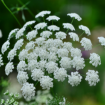 |
| Nigella damascena | Also known as ‘love-in-a-mist," nigella is prized for its intricate, airy foliage and unique, star-shaped flowers in late spring to early summer. | 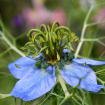 |
| Papaver rhoeas | This annual species of poppy is grown for its papery, solitary, bright scarlet summer flowers. | 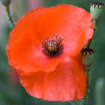 |
| Centaurea cyanus | Better known as ‘cornflower’, this annual wildflower is grown for its vivid blue flowers in late spring to early summer. |  |
Plant spring-flowering bulbs
When it comes to bulbs there is one simple rule – to plant during dormancy. This will vary depending on the flowering time:
- Spring-flowering bulbs are dormant in autumn.
- Summer-flowering bulbs are dormant in spring.
- Autumn-flowering bulbs are dormant in summer.
This means we are now at the tail-end of the spring-flowering bulb planting season, meaning you will hopefully already have got your daffodils, crocus, hyacinths, scilla, chionodoxa, fritillaries, and muscari in the ground. All going to plan, the only spring bulb still left to plant by now should be your tulips. These are best left until last to avoid the airborne spores of tulip fire disease.

Garden maintenance
- Check bonfires for signs of wildlife before lighting
Of course, what many of us look forward to most in November is Bonfire Night, especially if we have lots of garden waste unfit for composting! Here are some tips to keep your garden and wildlife safe on this special evening:
- Do check the base of bonfires before lighting. Hedgehogs love to burrow under the pile.
- Don’t build a bonfire or set off fireworks near to hedging or trees. November can be dry, and so can leaves if they are turning.
- Don’t forget to check the wind direction. Sparks can fly!
- Don’t have too many loud fireworks if you live in an area with lots of wildlife.
- Do have a fantastic night and celebrate safely!
- Raise height of lawnmower blades if mowing the lawn
If mild autumn weather means you are still having to mow the lawn, make sure you are doing so on a higher setting than during summer. You need the grass to be in optimum health to withstand winter, and a higher cut means more photosynthesis and deeper roots.
- Aerate lawn before winter fully arrives
If your lawn is prone to winter waterlogging, it can be a good idea to improve drainage by aerating in autumn. The simplest way of doing this is repeatedly spiking it as deep as you can with a garden fork, or, on a larger scale, using an aerating machine. A layer of sand brushed into the holes will help the effects last longer.
Read our How to Keep Your Lawn Looking Perfect article for a more in-depth guide.
- Lay new lawn turf on mild, dry days
November can be a great time to lay turf – the climate tends to take care of irrigation, and it will have a few months to settle in before the arrival of any hot, dry weather. Simply avoid doing this on very wet or frosty days.
November is now too late to sow grass seed, as the temperatures are too low for germination. Wait instead until the ground begins to warm up in early spring.
Visit our Turf and Lawn Care page for detailed advice.
- Leave food out for birds and wildlife
By feeding the wildlife in our gardens, we can make a significant difference to local populations. Expert advice says the best way to support birds is to feed them year round without fail. Try not to let feeders run out (particularly during the colder months), as this will mean birds use vital energy on a wasted trip.
See our How to Make a Wildlife-Friendly Garden blog for more tips.
- Clear up leaves and debris from lawns and ponds
It’s the big leaf clear up! While this may feel like an endless task, keeping on top of it will keep lawns and ponds healthy and free of the smothering effects of decomposing material. Bag or pile up the leaves to make your very own leaf mould.
- Clean out any empty water butts
As we enter the rainy season, it is a good idea to give water butts a good old clean to ensure the water they collect remains in a usable condition. One of those little jobs you’ll thank yourself for later!
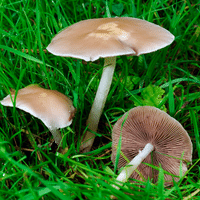
Pests and diseases
- Remove toadstools and fairy rings on lawns
These will often appear on lawns at this time of year. They tend to be harmless and will disappear with good lawn maintenance, however, if children have access to the lawn it can be a good idea to remove toadstools.
- Brush off worm casts
While harmless indicators of healthy soil, these can get smeared when walked on and spoil the look of a lawn. If you are bothered by this, brush them off with a stiff broom on a dry day.
- Check for white rust on chrysanthemums
This is a fungal disease that causes yellowing of leaves, white pustules on the undersides of leaves, and overall weakening of the plant. Plants tend to present these symptoms during autumn, so it pays to be vigilant at this time of year. Remove and dispose of any affected leaves, and in severe cases, destroy the entire plant.
- Watch out for crown or brown rots on perennials
Look out for these on dormant perennials, particularly if you garden on clay or poorly drained soil. Unfortunately, there is little to be done once these fungal diseases take hold, and the best action is to dig up and dispose of the plant. Ensuring good drainage and avoiding excessive watering can help prevent the problem in the future.
- Look out for symptoms of grey mould
This common disease causes the decay of plant material accompanied by a fuzzy mould. It is particularly prevalent under glass and on soft fruit. Much like rot, it tends to be terminal. Prevention is the best defence, helped by disposing of dead plant material promptly and ensuring good ventilation.
- Install guards around shrubs and trees to protect from rabbits, squirrels, and deer
There is nothing more frustrating than finding your newly planted shrubs and trees shredded by sharp teeth. Spiral guards can be useful on the trunks of young trees, though remember to remove them once the tree is established. For shrubs, a wire barrier/cage constructed around the plant is often the only way to protect it completely. It is worth carrying out these measures immediately after planting (i.e., now for bareroots), rather than waiting for the problem to occur!
While we’re on the subject, it is worth taking a moment to familiarise yourself with other potential issues you might encounter when growing a hedge. Forewarned is forearmed, and all that!
We hope you’re feeling fired up and raring to whip your November garden into shape. This is the last big push before winter, though, as always, there will still be a few tasks to do in the months ahead. Check out our December jobs blog to see what’s in store.
Show more >>>
Show less <<<


